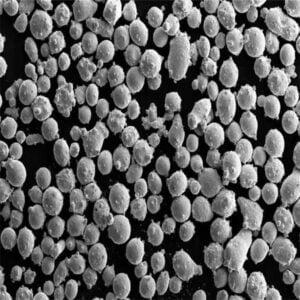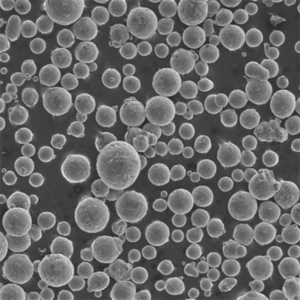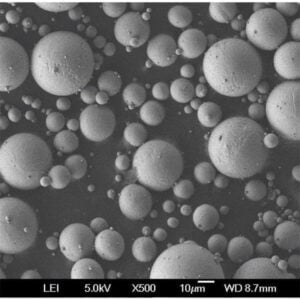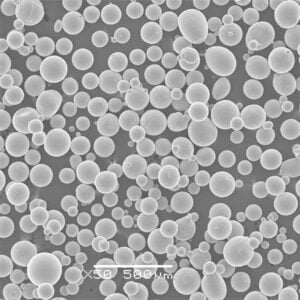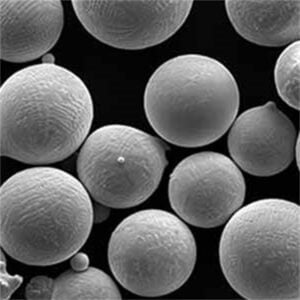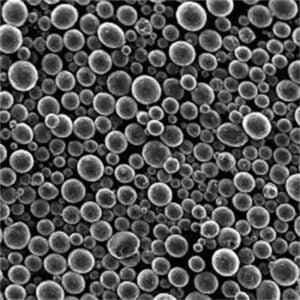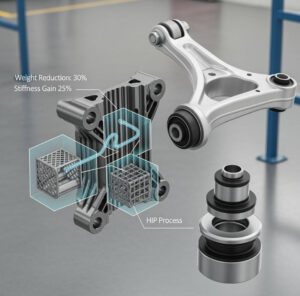De uitgebreide gids voor thermisch spuiten
Inhoudsopgave
Thermisch spuiten is een fascinerend en complex proces dat een integraal onderdeel vormt van talloze industriële toepassingen. Dit artikel duikt diep in de fijne kneepjes van thermisch spuiten en biedt een gedetailleerd overzicht, een bespreking van specifieke metaalpoedermodellen en een analyse van de verschillende toepassingen, voordelen en beperkingen. We gaan ook in op de specificaties, kwaliteiten en normen, geven inzicht in leveranciers en prijzen en sluiten af met een handige FAQ-sectie.
Overzicht van thermisch spuiten
Thermisch spuiten is een coatingproces waarbij gesmolten of verwarmde materialen op een oppervlak worden gespoten om een beschermende of decoratieve laag te vormen. Deze techniek wordt veel gebruikt in de productie, auto-industrie, luchtvaartindustrie en vele andere industrieën vanwege de veelzijdigheid en effectiviteit bij het verbeteren van oppervlakte-eigenschappen.
Wat is thermisch spuiten?
Bij thermisch spuiten wordt een poeder of draad in een vlam of plasmastraal gevoerd om een stroom gesmolten deeltjes te creëren. Deze deeltjes worden vervolgens op het te coaten oppervlak gestuwd, waar ze snel stollen en een duurzame laag vormen. Het proces kan worden gebruikt om een breed scala aan materialen aan te brengen, waaronder metalen, keramiek, kunststoffen en composieten.
Waarom thermisch spuiten gebruiken?
Thermisch spuiten biedt verschillende voordelen:
- Verbeterde slijtvastheid: Het verbetert de slijtvastheid van oppervlakken aanzienlijk.
- Corrosiebescherming: Biedt uitstekende bescherming tegen corrosie.
- Thermische isolatie: Effectief voor thermische isolatietoepassingen.
- Elektrische geleidbaarheid: Kan worden gebruikt om geleidende coatings te maken.
Belangrijkste processen bij thermisch spuiten
De belangrijkste thermische spuitprocessen zijn:
- Vlam Spuiten
- Plasmaspuiten
- Hoge snelheid autogeen spuiten (HVOF)
- Koud spuiten
- Elektrisch boogspuiten
Elk van deze processen heeft zijn unieke voordelen en is geschikt voor specifieke toepassingen.
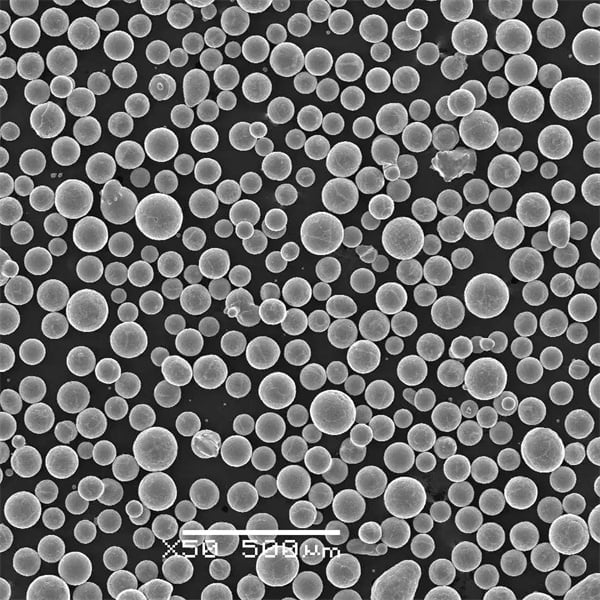
Types van Thermisch spuiten Metaalpoeders
Metaalpoeders die worden gebruikt bij thermisch spuiten zijn cruciaal voor het succes van het coatingproces. Hier zijn tien specifieke metaalpoeders die veel worden gebruikt:
1. Alumina-Titania (Al2O3-TiO2) poeder
Dit poeder is een mengsel van aluminiumoxide en titania en staat bekend om zijn uitstekende slijtvastheid en elektrische isolatie-eigenschappen. Het wordt vaak gebruikt in de elektronica-industrie.
2. Chroomcarbide (Cr3C2) poeder
Chroomcarbidepoeder wordt gebruikt vanwege de uitzonderlijke hardheid en weerstand tegen slijtage en corrosie, waardoor het ideaal is voor toepassingen bij hoge temperaturen.
3. Kobalt-chroom (CoCr) poeder
Kobalt-chroomlegeringen zijn geliefd om hun hoge slijtvastheid en taaiheid. Ze worden vaak gebruikt in medische implantaten en onderdelen voor de ruimtevaart.
4. Nikkel-aluminium (NiAl) poeder
Nikkel-aluminiumpoeders staan bekend om hun uitstekende hechtingseigenschappen en worden vaak gebruikt als hechtlaag in thermische spuittoepassingen.
5. Wolfraamcarbide-kobalt (WC-Co) poeder
Dit poeder biedt een superieure hardheid en slijtvastheid, waardoor het geschikt is voor extreme slijtageomstandigheden.
6. Roestvrij staal (316L) poeder
316L roestvrijstalen poeder is corrosiebestendig en wordt gebruikt in verschillende toepassingen, waaronder maritieme en medische apparatuur.
7. Zirkoniumoxide (ZrO2) poeder
Zirkoniumoxide poeder wordt gebruikt voor zijn warmte-isolerende eigenschappen en wordt vaak toegepast in thermische barrière coatings.
8. Molybdeen (Mo) poeder
Molybdeenpoeder staat bekend om zijn hoge smeltpunt en uitstekende thermische en elektrische geleidbaarheid, waardoor het nuttig is in verschillende industriële toepassingen.
9. Koper (Cu) poeder
Koperpoeder wordt gebruikt voor zijn elektrische en thermische geleidbaarheid, vaak in de elektronica-industrie.
10. Poeder van ijzer (Fe)
IJzerpoeder wordt gebruikt in toepassingen die een goede slijtvastheid en magnetische eigenschappen vereisen.
Toepassingen van Thermisch spuiten
Thermisch spuiten wordt gebruikt in een breed spectrum van industrieën. Hier volgt een gedetailleerde blik op enkele belangrijke toepassingen:
| Industrie | Sollicitatie | Beschrijving |
|---|---|---|
| Lucht- en ruimtevaart | Turbinebladen | Thermisch spuiten biedt thermische barrières en slijtvastheid aan turbinebladen. |
| Automobiel | Motorcomponenten | Verbetert de slijtvastheid en levensduur van motoronderdelen. |
| Olie gas | Pijpleidingen | Beschermt tegen corrosie en slijtage in ruwe omgevingen. |
| Medisch | Implantaten | Gebruikt in coatings voor biocompatibiliteit en slijtvastheid in implantaten. |
| Elektronica | Printplaten | Levert geleidende coatings en oplossingen voor thermisch beheer. |
| Stroomopwekking | Ketelbuizen | Beschermt tegen corrosie en erosie bij hoge temperaturen. |
| Productie | Mallen en Matrijzen | Verbetert de oppervlaktehardheid en verlengt de levensduur van het gereedschap. |
Voordelen van thermisch spuiten
Thermisch spuiten biedt tal van voordelen in vergelijking met andere coatingmethoden. Hier volgt een gedetailleerde vergelijking:
| Voordeel | Beschrijving |
|---|---|
| Veelzijdigheid | Kan worden gebruikt met een breed scala aan materialen. |
| Kosteneffectief | Biedt een kosteneffectieve oplossing om de levensduur van componenten te verlengen. |
| Prestatie | Verbetert de prestaties door slijtage, corrosie en hittebestendigheid te verbeteren. |
| Flexibiliteit | Geschikt voor verschillende vormen en maten van onderdelen. |
| Efficiëntie | Snel aanvraagproces met minimale uitvaltijd. |
Nadelen van Thermisch spuiten
Ondanks de voordelen heeft thermisch spuiten enkele beperkingen:
| Nadeel | Beschrijving |
|---|---|
| Oppervlaktevoorbereiding | Vereist grondige voorbereiding van het oppervlak voor effectieve hechting. |
| Uitrusting Kosten | Hoge initiële investering in apparatuur voor thermisch spuiten. |
| Complexiteit | Het proces kan complex zijn en vereist bekwame operators. |
| Diktebeperking | Beperkt tot bepaalde coatingdiktes zonder afbreuk te doen aan de kwaliteit. |
Specificaties, maten, kwaliteiten en normen
Thermische spuitmaterialen en -processen moeten voldoen aan specifieke normen en specificaties om kwaliteit en prestaties te garanderen. Hier volgen enkele details:
| Materiaal | Standaard | Cijfer | Maat |
|---|---|---|---|
| Aluminiumoxide-Titania | ISO 14919 | 99% Zuiverheid | 15-45 µm |
| Chroomcarbide | ASTM B833 | 75-80% Cr3C2 | 10-45 µm |
| Kobalt-chroom | AMS 5889 | CoCrW | 15-53 µm |
| Nikkel-Aluminium | ISO 14920 | Ni5Al | 10-45 µm |
| Wolfraamcarbide-kobalt | ASTM B794 | WC-12Co | 15-45 µm |
| Roestvrij staal | ISO 5832-1 | 316L | 15-53 µm |
| Zirkonia | ASTM F1598 | 8Y-ZrO2 | 15-53 µm |
| Molybdeen | ASTM B387 | 99% Zuiverheid | 15-53 µm |
| Koper | ASTM B216 | 99% Zuiverheid | 10-45 µm |
| Ijzer | ASTM B749 | Fe | 10-45 µm |
Leveranciers en prijsinformatie
Het vinden van de juiste leverancier is cruciaal voor het verkrijgen van thermische spuitmaterialen van hoge kwaliteit. Hier is een tabel met enkele toonaangevende leveranciers en hun prijzen:
| Leverancier | Materiaal | Prijs (per kg) | Plaats |
|---|---|---|---|
| Praxair | Wolfraamcarbide-kobalt | $100 | VS |
| Hogenäs | Nikkel-Aluminium | $60 | Zweden |
| Metco | Chroomcarbide | $80 | Zwitserland |
| Timmerman | Kobalt-chroom | $120 | VS |
| Oerlikon | Aluminiumoxide-Titania | $70 | Zwitserland |
| Kennametal | Roestvrij staal | $50 | VS |
| HC Starck | Zirkonia | $90 | Duitsland |
| Sandvik | Molybdeen | $85 | Zweden |
| Tekna | Koper | $40 | Canada |
| H.C. Starck | Ijzer | $30 | Duitsland |
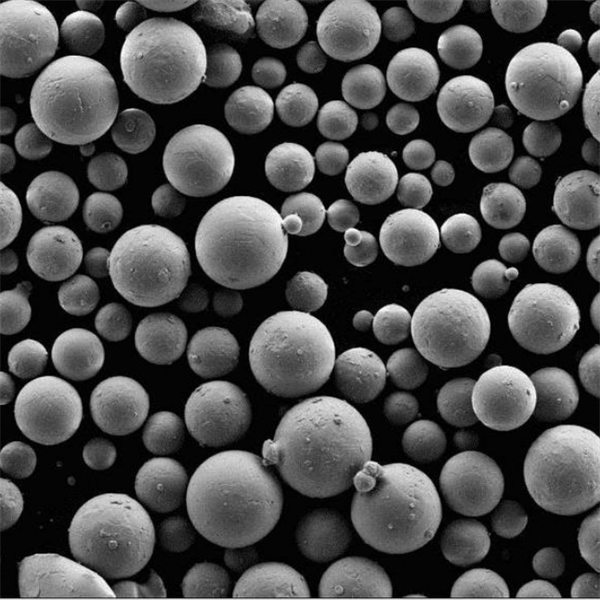
De voor- en nadelen van Thermisch spuiten
Bij het kiezen van een coatingproces is het essentieel om de voor- en nadelen tegen elkaar af te wegen. Hier volgt een vergelijking:
| Aspect | Pluspunten | Nadelen |
|---|---|---|
| Kosten | Rendabel voor grote componenten | Hoge initiële uitrustingskosten |
| Duurzaamheid | Uitstekende weerstand tegen slijtage en corrosie | Vereiste voorbereiding van het oppervlak |
| Veelzijdigheid | Geschikt voor verschillende materialen en toepassingen | Complexiteit in werking |
| Efficiëntie | Snel coatingproces | Diktebeperkingen |
FAQ
V1: Welke materialen kunnen worden gebruikt bij thermisch spuiten?
A1: Een breed scala aan materialen, waaronder metalen, keramiek, kunststoffen en composieten.
V2: Welke industrieën profiteren het meest van thermisch spuiten?
A2: Ruimtevaart, automobielindustrie, olie & gas, medisch, elektronica, energieopwekking en productie.
V3: Wat zijn de belangrijkste voordelen van thermisch spuiten?
A3: Verbeterde slijtvastheid, corrosiebescherming, thermische isolatie en elektrisch geleidingsvermogen.
V4: Wat zijn de typische beperkingen van thermisch spuiten?
A4: Vereist oppervlaktevoorbereiding, hoge materiaalkosten, complexiteit en diktebeperkingen.
Additional FAQs on Thermal Spraying
- Q: How do I choose between HVOF, plasma spraying, and cold spray for my application?
A: Match process to property needs: HVOF yields dense, low-oxide cermet coatings with high bond strength (wear/corrosion). Plasma spraying handles high-melting ceramics (thermal barriers, electrical insulation). Cold spray preserves feedstock properties with minimal oxidation, ideal for corrosion repair and electrically conductive, ductile metals. - Q: What surface preparation is best practice before thermal spraying?
A: Grit blast with angular alumina or alumina-silicate to achieve 3–5 mil (75–125 μm) Ra anchor profile, solvent clean to SSPC-SP1, and mask critical features. Verify roughness and cleanliness per ISO 8501/8503 or SSPC/NACE standards to ensure adhesion. - Q: How is coating quality verified after application?
A: Conduct adhesion per ASTM C633, porosity by image analysis (ASTM E2109), microhardness (ASTM E384), thickness by magnetic/eddy current (ASTM D7091) or metallography, and wear testing (ASTM G65/G99). For TBCs, perform thermal cycling/CMAS resistance tests. - Q: Can thermal sprayed coatings be machined or ground to tolerance?
A: Yes. Finish grind with diamond/CBN wheels for carbides and ceramics using flood coolant; finish turn/OD grind for metallics. Leave machining allowance (typically 0.1–0.3 mm) and validate residual stress to avoid cracking. - Q: What are typical bond strengths for common thermal spray systems?
A: HVOF WC–Co/Cr: 60–80 MPa; plasma-sprayed alumina: 15–30 MPa (with bond coat); cold-sprayed aluminum/copper: 30–70 MPa; arc-sprayed steels: 10–25 MPa. Actual values depend on substrate, bond coat, and preparation.
2025 Industry Trends in Thermal Spraying
- Sustainability focus: more hydrogen-fueled HVOF/plasma systems and closed-loop dust/overspray recovery; documented Scope 3 reductions in coating supply chains.
- Digital qualification: inline plume/melt-jet monitoring, torch telemetry, and AI-based process window management tied to ISO 14922 quality plans.
- Cold spray scale-up: expanded structural repair for aerospace/defense and copper/aluminum busbar coatings for EVs due to low heat input.
- Hybrid stacks: bond coats via HVOF, top coats via suspension plasma spray (SPS) for finer microstructures and higher thermal cycling life.
- Standards refresh: wider adoption of ISO 14922 (quality requirements), ISO 2063-1/2 (zinc/aluminum thermal spraying for corrosion), and updates aligning with aerospace AMS 2447/2448.
2025 Snapshot: Performance, Economics, and Adoption
| Metric (2025) | Waarde/Bereik | Notes/Source |
|---|---|---|
| Global thermal spray market size | $13–15B | MarketWatch/Wohlers syntheses; includes equipment, materials, services |
| HVOF WC–Co coating porosity | 0.5–2.0% | Typical with optimized parameters and fresh powder (ISO 14919 feedstock) |
| Plasma-sprayed YSZ TBC cyclic life | 1,000–2,500 cycles | Furnace thermal cycling, depends on bond coat and SPS vs APS routes |
| Cold spray deposition efficiency (Cu/Al) | 60–90% | High DE for ductile metals; minimal oxidation |
| Typical operating cost change vs 2023 | −5% to −10% | From gas recovery, hydrogen blends, and improved gun maintenance |
| EV/energy sector coating demand growth | +15–20% YoY | Busbars, battery tooling, turbine/hydrogen components |
Key references:
- ISO 14919, ISO 14922, ISO 2063-1/2 (www.iso.org)
- ASM Handbook, Vol. 5: Surface Engineering (www.asminternational.org)
- NACE/AMPP corrosion guidance for sprayed metallic coatings (www.ampp.org)
- OEM technical bulletins from Oerlikon Metco, Praxair/TAFA, and TST Systems
Latest Research Cases
Case Study 1: Hydrogen-Assisted HVOF for WC–CoCr Wear Coatings (2025)
Background: A mining OEM sought to lower CO2 footprint and improve deposition efficiency on pump sleeves while maintaining wear resistance.
Solution: Implemented H2-enriched fuel mix with closed-loop oxygen control; optimized powder feed for 15–45 μm WC–10Co4Cr per ISO 14919; inline plume monitoring to stabilize particle temperature/velocity.
Results: 1.2% average porosity, +8% bond strength vs baseline kerosene HVOF, 12% lower specific fuel consumption, and 18% reduction in estimated CO2e per m² coated. Abrasion loss (ASTM G65 Proc. A) improved by 10%.
Case Study 2: Suspension Plasma Spray (SPS) YSZ–Gd2Zr2O7 Dual-Layer TBCs (2024)
Background: Aerospace engine MRO aimed to boost thermal cycling life on hot-section components.
Solution: APS NiCrAlY bond coat followed by SPS fine-columnar YSZ and gadolinium zirconate top layers; particle diagnostics tuned for narrow temperature distribution.
Results: 35% longer thermal cycling life vs conventional APS YSZ, 0.2–0.4 W/m·K lower thermal conductivity, and reduced spallation in burner rig tests. Maintained thickness tolerance ±50 μm after finish grind. Data aligned with OEM acceptance criteria and ISO 14922 quality documentation.
Meningen van experts
- Dr. Christian M. Gourlaouen, Global Head of Technology, Oerlikon Metco: “Process-embedded sensing and digital twins are redefining thermal spraying—parameter drift can be caught in seconds, which is crucial for aerospace-grade coatings.” (www.oerlikon.com/metco)
- Prof. Sanjay Sampath, Director Emeritus, Center for Thermal Spray Research, Stony Brook University: “Microstructure control—especially via SPS and solution precursor plasma spray—delivers step-changes in thermal barrier performance at industrial scale.” (www.stonybrook.edu)
- Dr. Victor Champagne, Senior Scientist, U.S. Army CCDC (Cold Spray pioneer): “Cold spray is transitioning from repair to production, offering structural, low-oxide deposits that are difficult to achieve with high-temperature routes.” (asc.army.mil profiles; peer-reviewed publications)
Practical Tools and Resources
- ISO/ASTM standards: ISO 14919 (feedstock), ISO 14922 (quality requirements), ISO 2063 (zinc/aluminum spray), ASTM C633 (adhesion), ASTM E2109 (image analysis for porosity)
- ASM Handbook, Volume 5: Surface Engineering – comprehensive property/process data
- NIST Thermal Spray Roadmap and data repositories (www.nist.gov)
- AMPP/NACE corrosion protection standards for sprayed metallic coatings (www.ampp.org)
- OEM application notes and material datasheets: Oerlikon Metco, Praxair/TAFA, Kennametal, Höganäs
- Process monitoring solutions: in-situ plume/particle diagnostics from Tecnar DPV/AccuraSpray, and vision-based monitoring from third-party integrators
- Costing calculators and job planning: industry spreadsheets from OEMs and trade groups; consult AMBF/CTSR resources for DoE templates
Last updated: 2025-10-14
Changelog: Added 5 new FAQs tailored to process selection, prep, QA, finishing, and bond strength; included 2025 trend analysis with data table; summarized two recent case studies (H2-assisted HVOF and SPS dual-layer TBCs); provided expert opinions with affiliations; compiled standards and tools/resources with authoritative sources.
Next review date & triggers: 2026-04-15 or earlier if ISO/ASTM standards are revised, major OEMs release new HVOF/SPS guns or powders, or hydrogen infrastructure guidance changes process economics by >10%.
Delen op
MET3DP Technology Co, LTD is een toonaangevende leverancier van additieve productieoplossingen met hoofdkantoor in Qingdao, China. Ons bedrijf is gespecialiseerd in 3D printapparatuur en hoogwaardige metaalpoeders voor industriële toepassingen.
Onderzoek om de beste prijs en een op maat gemaakte oplossing voor uw bedrijf te krijgen!
gerelateerde artikelen
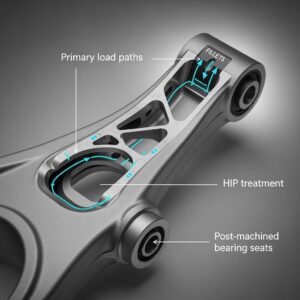
Metal 3D Printing for U.S. Automotive Lightweight Structural Brackets and Suspension Components
Lees verder "Over Met3DP
Recente update
Ons product
NEEM CONTACT MET ONS OP
Nog vragen? Stuur ons nu een bericht! Na ontvangst van uw bericht behandelen wij uw verzoek met een heel team.







